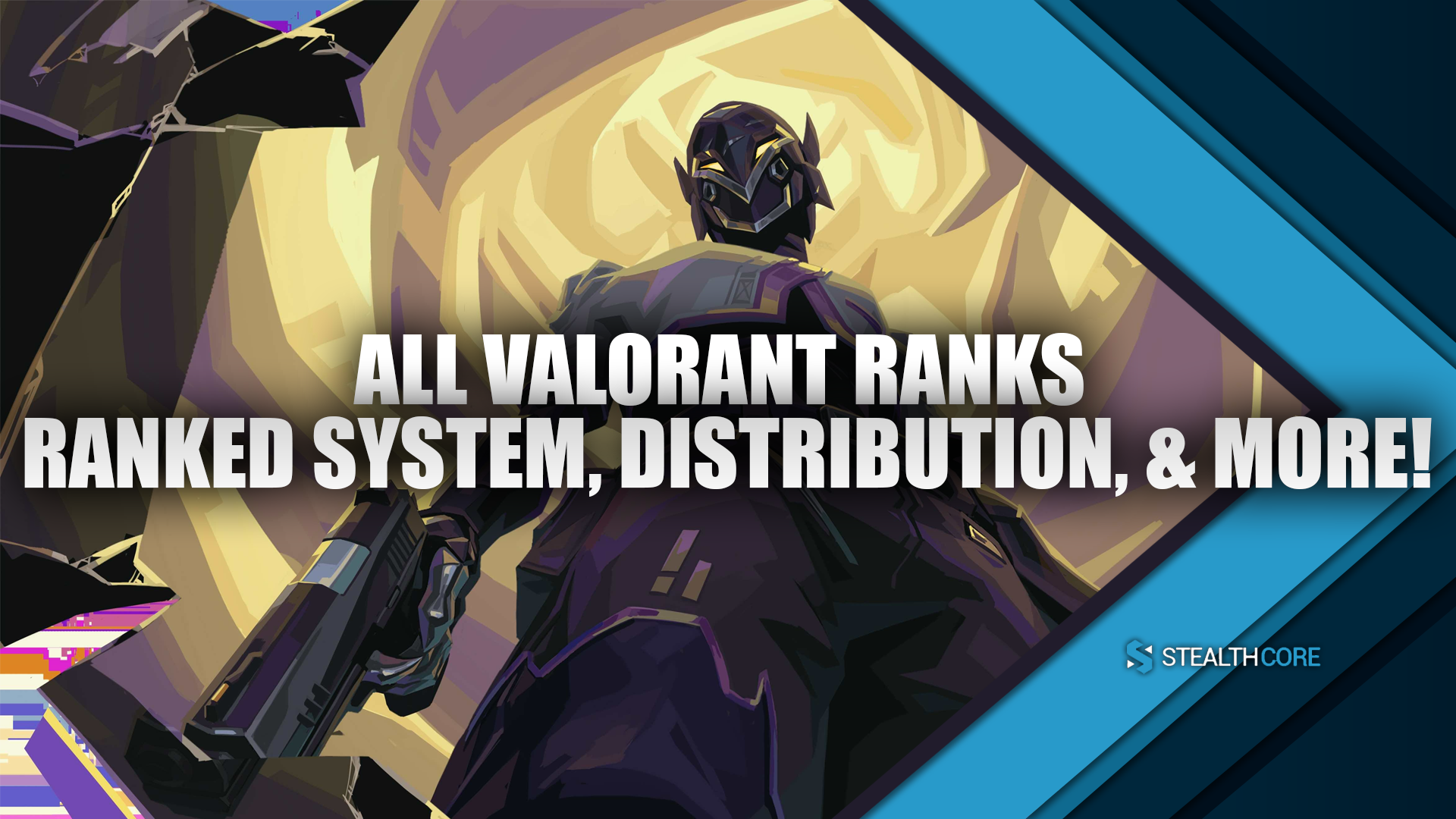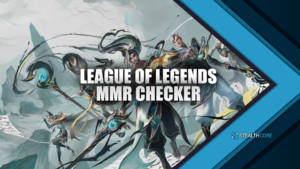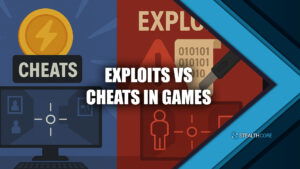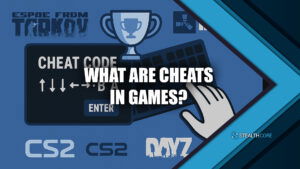Valorant’s ranking system features 25 ranks from Iron to Radiant. Every rank except Radiant is divided into three divisions (I, II, and III). This guide breaks down Valorant’s complete ranking structure, explains how the competitive system determines player ranks, and shows the current rank distribution across the player base. By following our Undetected Cheats’ tips & tricks, you’ll always stay one step ahead of your opponents and dominate every single match!
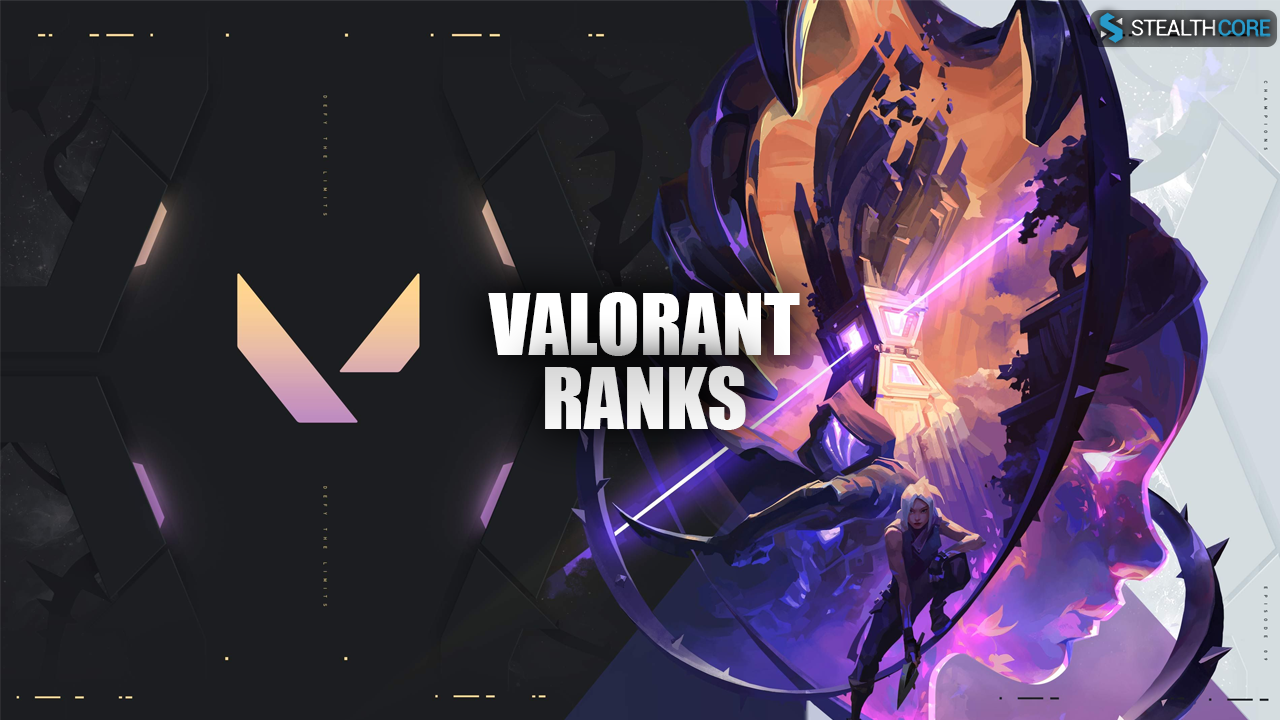
Valorant Ranks
Valorant’s 25 competitive ranks are organized into nine tiers, each rank is divided into three divisions except Radiant. Here’s the complete breakdown of all ranks from lowest to highest:
- Iron
- Bronze
- Silver
- Gold
- Platinum
- Diamond
- Ascendant
- Immortal
- Radiant
- Single tier reserved for the top 500 players in each region
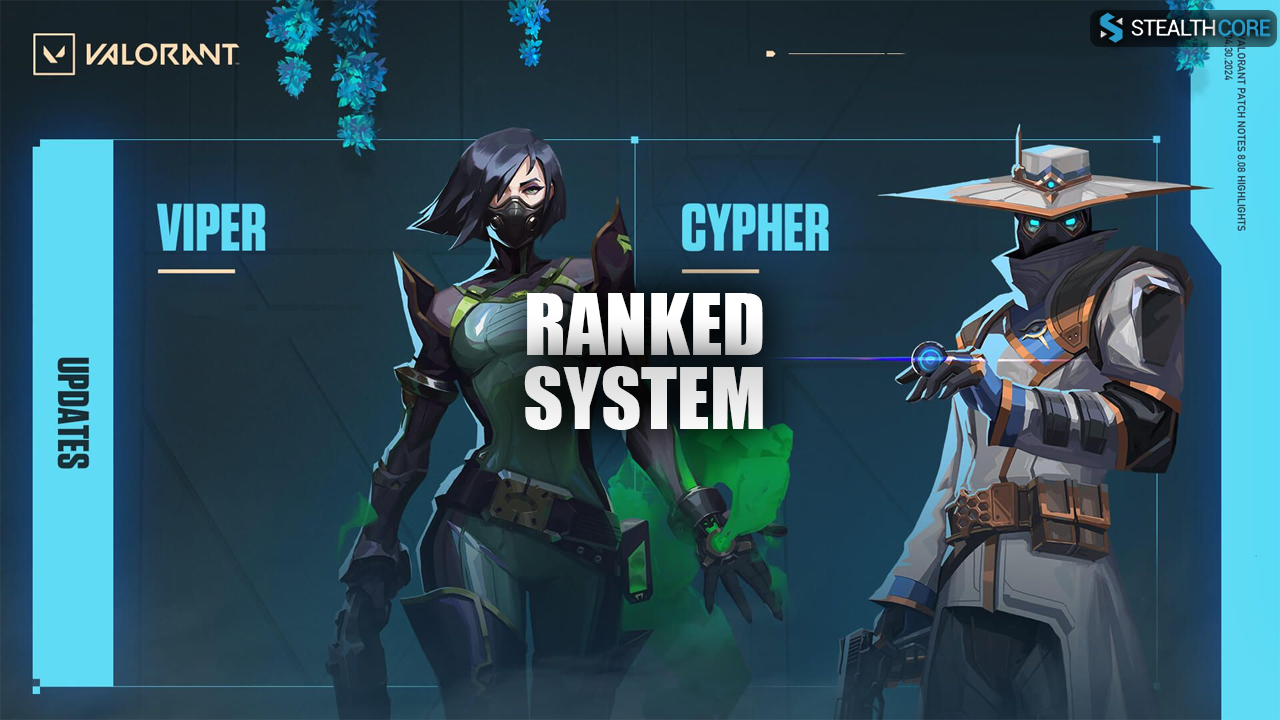
Ranked System
Valorant’s ranking system uses Rank Rating (RR) to determine rank progression. Each match impacts RR differently based on the outcome. Winning a match typically rewards 20-25 RR, while losing deducts around the same amount. In tied matches, players can earn up to 2 RR if they achieve MVP status.
Advancing to the next rank requires earning 100 RR. Players can skip divisions by maintaining win streaks while consistently achieving MVP. This rewards exceptional performance and allows skilled players to reach their appropriate rank faster after rank resets.
Performance bonuses add another layer to RR gains. Players on win streaks who consistently achieve MVP status can earn up to 35 RR or more per match. These increased RR gains scale based on current rank, meaning higher-ranked players might see different RR changes than those in lower ranks.
Also Read: How to Improve in Tarkov Fast
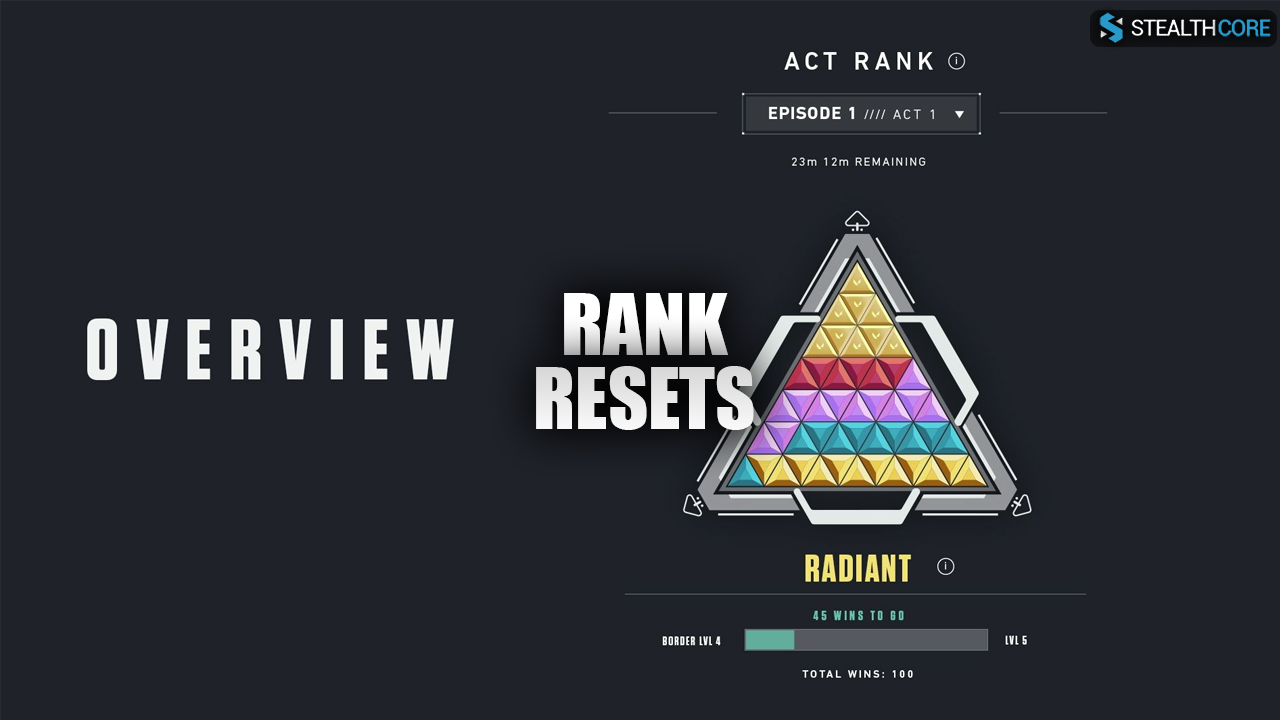
Rank Resets
Act resets require one placement match to reveal your new rank. Most players land close to their previous rank, with minimal RR changes.
Episode resets are more impactful. They require five placement matches and typically drop players about three divisions below their previous rank. For example, an Immortal 1 player might place between Diamond 3 (90 RR) and Ascendant 1 (10 RR) after an Episode reset.
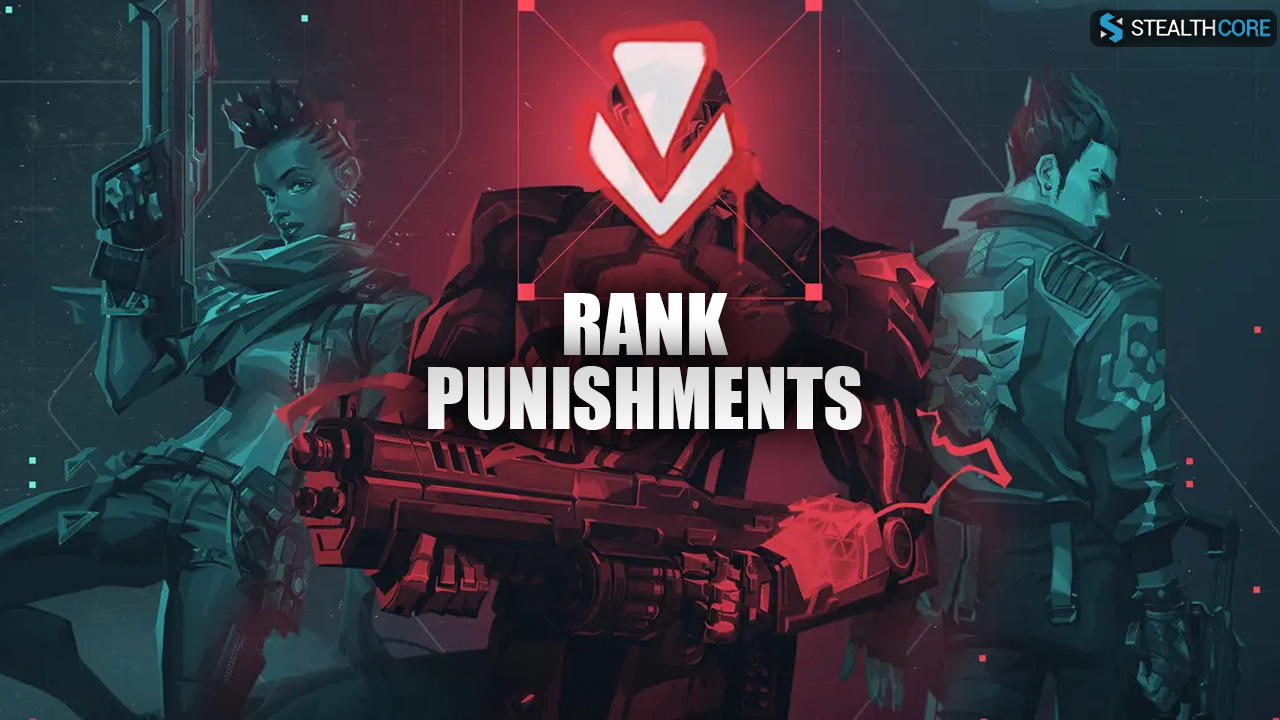
Rank Punishments
Valorant’s punishment system targets disruptive behavior with immediate consequences. Players who go AFK during matches lose 30 RR regardless of match outcome. This penalty applies even if their team wins. The system also issues temporary queue bans, preventing players from joining new matches. These stricter penalties differ from other competitive games like League of Legends, which uses low-priority queues and gradual penalties for repeat offenders.
Also Read: The Only EFT Hideout Guide You’ll Need
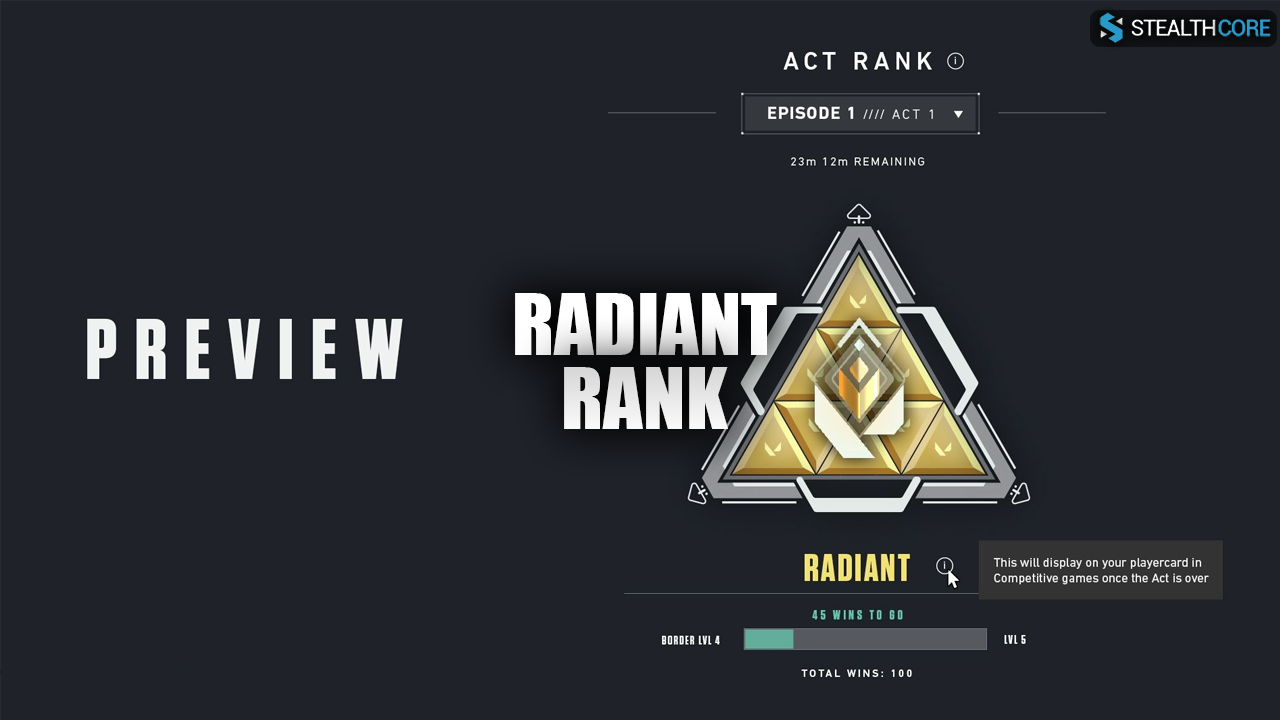
Radiant Rank
Radiant rank operates like League of Legends’ Challenger & Grandmaster. At the start of each episode, players must reach region-specific RR thresholds:
- Latin America & Korea: 200 RR
- Brazil: 340 RR
- North America: 450 RR
- APC: 400 RR
- EU: 550 RR
Only 500 players can hold Radiant rank per region. To claim a spot, players must surpass the RR of the current lowest-ranked Radiant player. For example, if the 500th Radiant has 1000 RR, reaching Radiant requires earning 1001 RR.
Unlike other competitive games, Valorant’s Radiant rank has no decay system. Once earned, players keep their Radiant status until someone overtakes their RR or until the next reset.
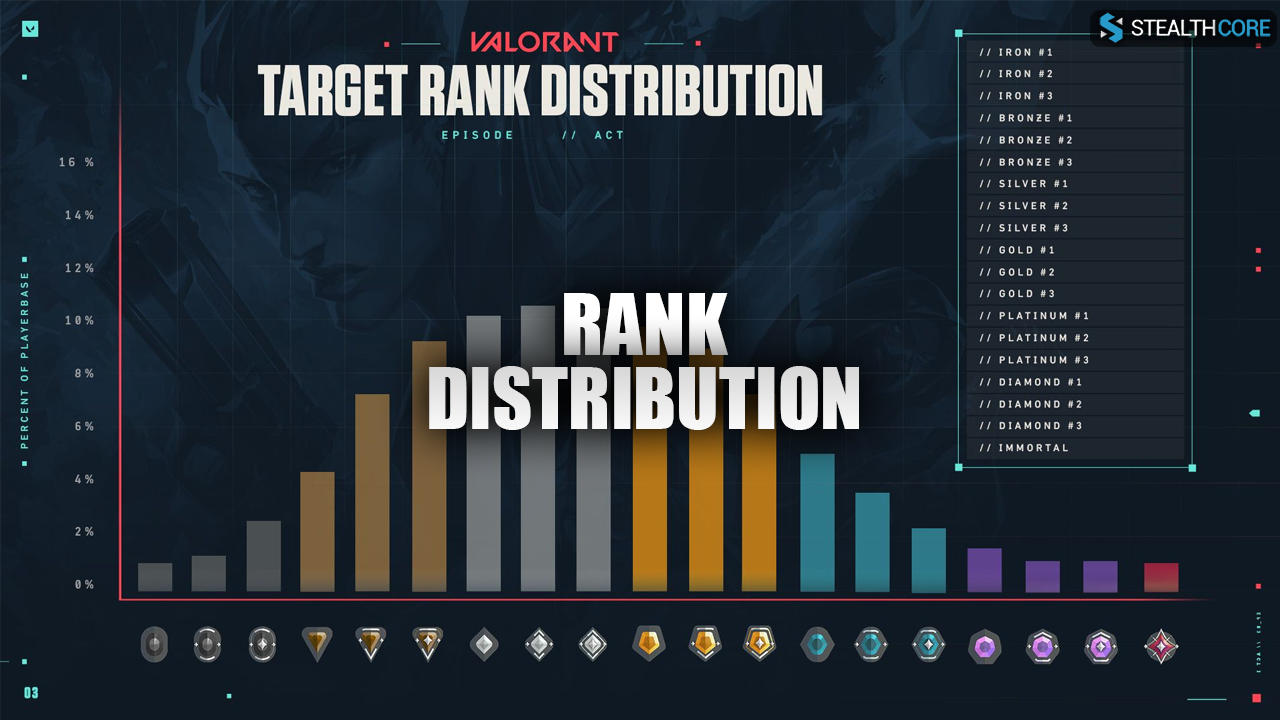
Rank Distribution
According to EsportsStales data from December 2024, here’s how Valorant’s player base is distributed across ranks:
- Iron: 7.2% of players
- Bronze: 16.9% of players
- Silver: 21.5% of players
- Gold: 21.9% of players
- Platinum: 16.4% of players
- Diamond: 10.4% of players
- Ascendant: 4.7% of players
- Immortal: 0.9% of players
- Radiant: 0.027% of players
The data shows most players (approximately 60%) fall between Bronze and Gold ranks, with Gold being the most populated tier. Higher ranks become increasingly exclusive, with less than 1% of players reaching Immortal and only a fraction achieving Radiant.
Final Words
To sum up, Valorant’s ranking system combines skill-based progression with regional competition at the highest levels. The 25-rank structure, from Iron to Radiant, creates clear goals for improvement while maintaining competitive integrity through strategic resets and strict punishment systems. This article was made possible with the help of some pro players, ensuring accurate information.
But why stop there? If you’re truly dedicated to taking your skills to the next level and dominating each match, check out our Valorant Cheats.

